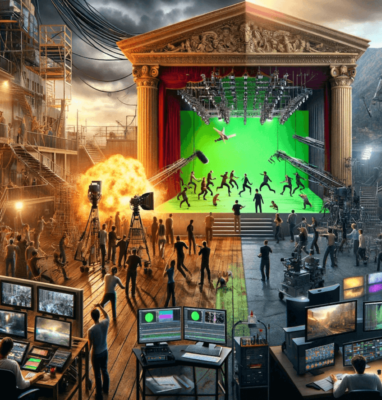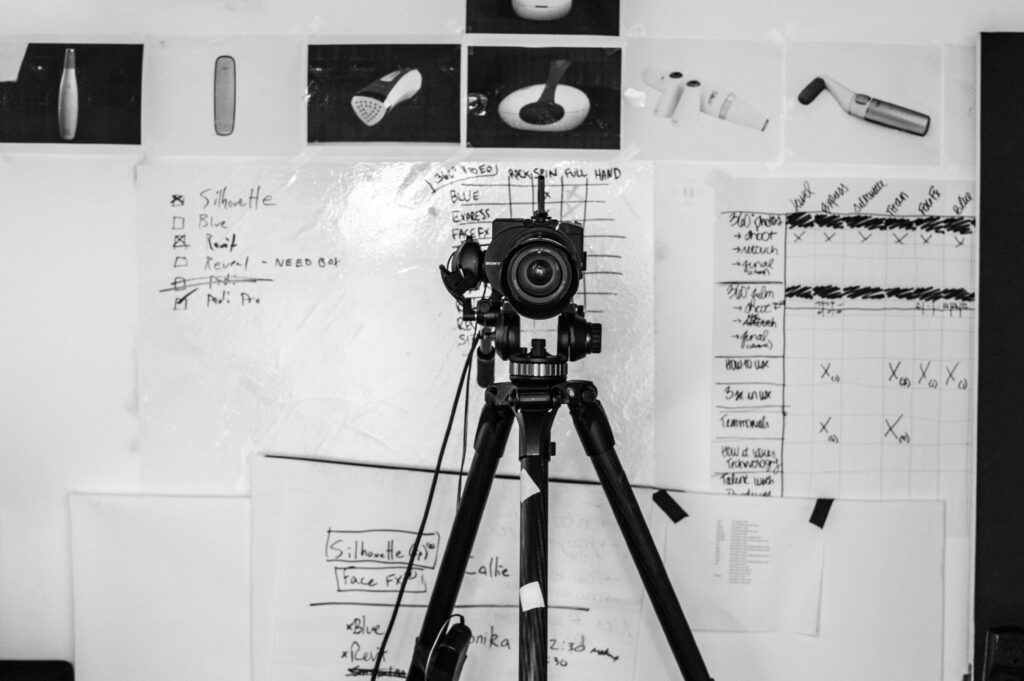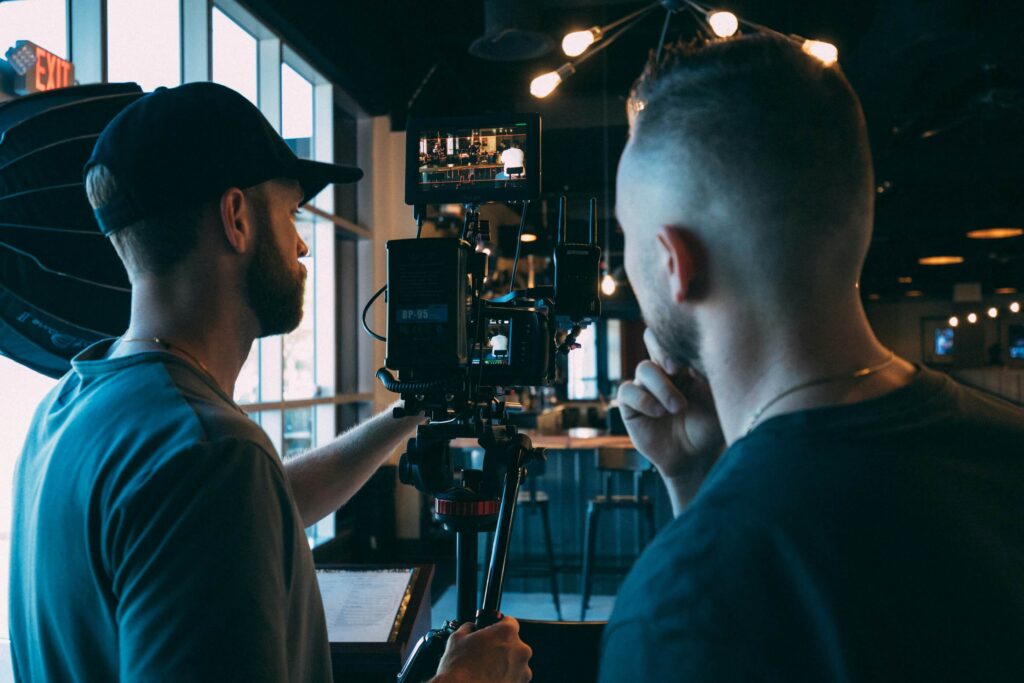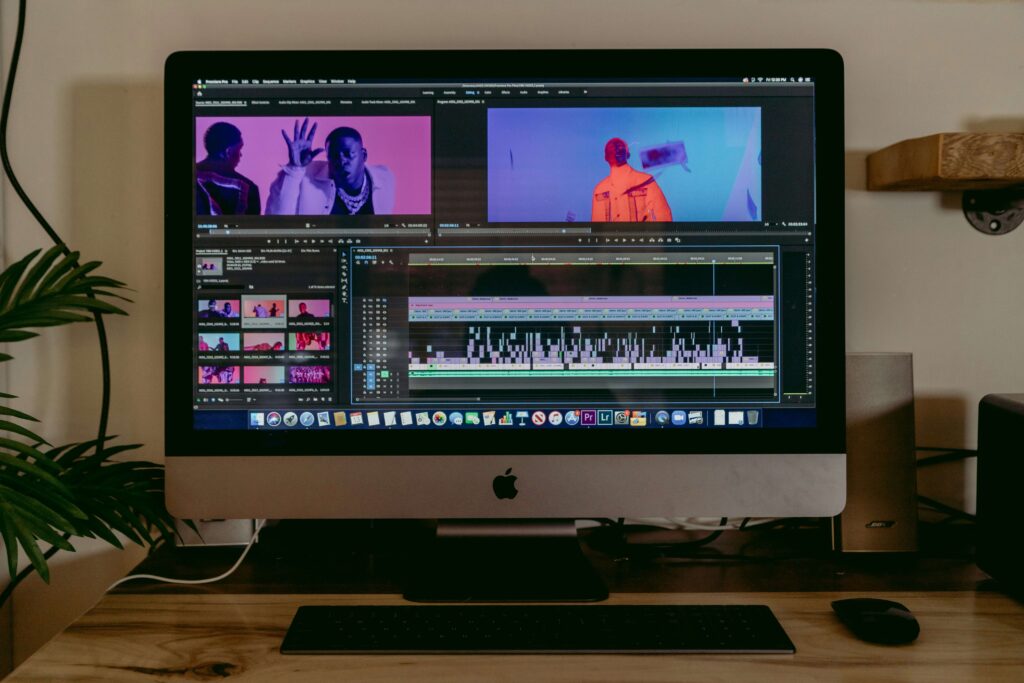How Can AI Help You in the Video Production Process?
Last updated: 7 March 2024

We’re currently experiencing a remarkable shift in the world of video production, thanks to AI content generation. This technological advancement is significantly reducing production costs while simultaneously increasing the use of video across various platforms.
Lowering Production Costs
AI’s role in automating many aspects of video production is a game-changer. Tasks that once required hours of manual labor, such as script writing, content production, editing and color correction, are now more efficient and cost-effective. This reduction in production costs is enabling both large companies and individual creators to produce high-quality videos without breaking the bank.
AI in Pre-Production
The initial stages of video production can present challenges in brainstorming compelling concepts. AI tools can address this by analyzing audience demographics, trending topics, and viewer data to suggest relevant video ideas that resonate with your target audience. Facing writer’s block during script development? AI can analyze existing scripts, identify pacing inconsistencies, and even generate alternative story variations to explore. Additionally, AI-powered storyboarding tools can convert scripts into basic visual representations, providing a clear direction for your video without the need for extensive manual sketching.

AI’s Role in Production
During the production phase, AI can be used to simplify and automate various tasks, increasing efficiency and creative potential. One notable application is automated green screen replacement, which reduces setup time and resource requirements. AI algorithms can analyze footage in real time and seamlessly replace the green screen background with desired scenes or environments. AI can also play an important role in camera and light control. Intelligent systems can adjust camera settings, framing, and lighting automatically based on predefined parameters or machine learning algorithms.
By automating repetitive and technically demanding tasks, AI allows production teams to capture more footage in less time, while maintaining consistent quality and reducing the need for extensive post-production.

AI for Post-Production
Usage of AI in post-production lets you to automate numerous difficult and time-consuming tasks. For example, AI can automatically transcribe dialogue from a video, saving editors valuable time and effort that would otherwise be spent manually transcribing the audio. This goes in hand with the automatic creation of subtitles or closed captions. AI can quickly and accurately add subtitles to a video by analyzing the dialogue and using machine learning algorithms to compare it to pre-existing subtitle files.
In addition to this, color grading, a critical aspect of post-production that can have a significant impact on the overall look and feel of a video, can also be automated using AI. AI algorithms can analyze footage and automatically adjust color, contrast, and exposure, resulting in a consistent and professional look.

Boosting Video Usage
With lowered costs and increased efficiency, we’re seeing a surge in video usage. More businesses and creators are turning to video as their preferred medium for communication, marketing, and storytelling. This uptick is not just about quantity; the quality of content is also improving, making videos more engaging and effective.
Our Role in This Shift
As creators, marketers, and consumers, we’re all part of this AI-driven transformation. By embracing these new tools and technologies, we’re able to create and enjoy more diverse and high-quality video content than ever before. This shift is not just changing how we produce content; it’s changing how we connect and communicate.




